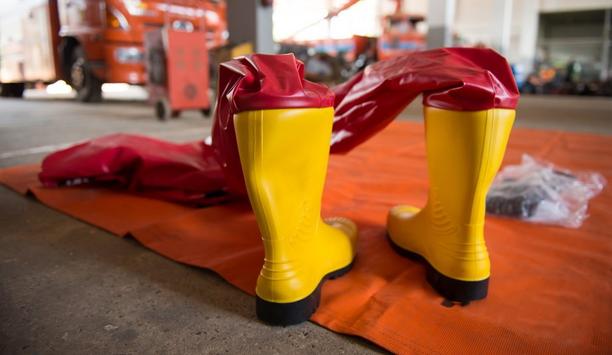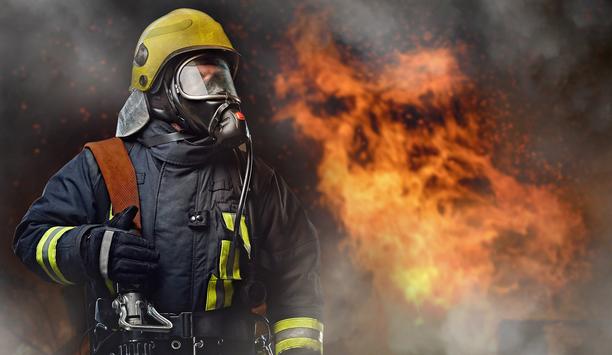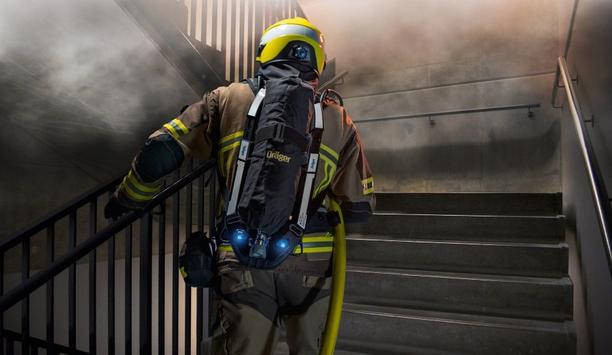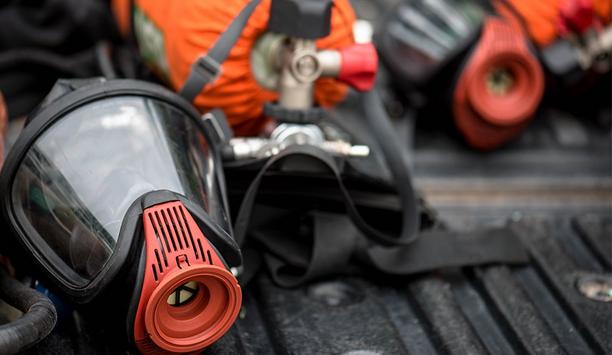Since the presentation of the Concept Fire Truck (CFT) in autumn 2016, many fire services and fire service experts have been able to get an idea of the special functionalities and ergonomic advantages of the vehicle concept.
Concept Fire Truck (CFT)
It turns out that some of the fire service trends for which the CFT is intended to offer solutions appear particularly important. At the forefront are the topics of health and safety, followed by the new ecology trend, which has been reinforced by the climate crisis, the mega-trend mobility and the ongoing progress of urbanization.
With regard to the countless functionalities of the CFT, the following innovations stand out most clearly, driving safety, agility (i.e. small turning circles), ease of use, ergonomics and driving performance.
Low pollutant emissions
The Concept Fire Truck fulfills the modern demands of politics and the population for fewer pollutant emissions
The Concept Fire Truck fulfills the modern demands of politics and the population for fewer pollutant emissions and combines these perfectly with a work device that is one hundred percent geared towards the requirements of the fire service.
The main questions here are, but what about the profitability? Can a company or a fire brigade even afford such a vehicle in the future?
Utility value
The focus should be on the benefits that can be created by this vehicle concept. A value can be assigned to this benefit, the so-called utility value. It is essential that this utility value is seen over the product life cycle, in relation to the acquisition value, thus enabling a holistic view.
The benefit or the utility value can be compared to currently used vehicle concepts, but it makes sense also in direct comparison to future possible concepts that are based on electrified truck chassis. They can differentiate between direct and indirect utility value potentials.
Advent of CFT technology
Since the turning circle of the CFT technology is much smaller with the same vehicle length, the vehicle length can be somewhat larger, which creates more available equipment space and more equipment can be held in the vehicle.
In addition, due to the special vehicle architecture with balanced axle load distribution, the maximum permissible axle loads can be better exploited at will. Both effects can lead to an optimization of the vehicle loading and thus, the fleet if, for example, the equipment of some special vehicles finds its place in the standard vehicles.
In addition, reduced interfaces in procurement, training and service offer further potential for savings. Calculated over the life cycle, all of this can result in a utility value potential of over 100,000 EUR and can also be reasonably estimated in advance.
Indirect utility potentials
The so-called indirect utility value potentials make up the far larger share
The so-called indirect utility value potentials make up the far larger share. These result essentially from the highly functional and ergonomic vehicle architecture and the networked embedding of the vehicle in digital system solutions.
First and foremost, the preservation of the health and fitness of fire fighters is massively supported. Ergonomic requirements, in which the person does not have to go to the equipment (up), but rather the vehicle can be lowered so that the equipment comes (down) to the person, will make work easier and protect the musculoskeletal system over countless hours of use.
Facilitating longer, fatigue-free work
In particular, the low entry height and the standing height in the crew compartment offer a lot of comfort and safety. By lowering the vehicle, step flaps can be dispensed with, which not only have ergonomic disadvantages, but can also pose a safety and injury risk. This facilitates longer, fatigue-free work and improves the failure statistics.
In addition to the physical strain, the psychological strain on the emergency services is becoming an increasingly important influencing factor. Due to the large energy store, it will be possible to work purely electrically over a long period of time at the place of use.
Energy for lighting and various ancillary consumers is available for hours, all without noise or pollutant emissions. In addition, the network simulation with a connected load of 18 kW saves the purchase of a power generator.
Digital possibilities
The use of the vehicle as a secure WiFi hotspot enables operation and function monitoring via a tablet
The use of the vehicle as a secure WiFi hotspot enables operation and function monitoring via a tablet, even outside the vehicle. At the same time, the integration of the EMEREC deployment management system makes it possible to display all relevant information in the vehicle and to call it up via the deployment tablet.
In addition to the classic status information (tank content, foam content, pump pressure, etc.), various databases (Hydrant information, chemical data, vehicle and building data etc.) can be accessed in real time. This results in a highly efficient way of working, which, for example, allows the machinist to temporarily move away from the vehicle to support his comrades.
Simple and intuitive operating concepts
Rosenbauer International AG believes that simple and intuitive operating concepts ensure that there is no excessive demand and that it is easy to maintain control, so that even those generations who have not yet grown up with digital possibilities can make the right operating decisions calmly and concentrated. The operating philosophy is not only appealing and well thought-out, but it is also state-of-the-art. Just as generations Y and Z expect.
After all, that is what it is all about, that enthusiasm for the fire service is promoted by technological progress and thus, many young talents will continue to motivate themselves to take up this challenging and exciting profession!






